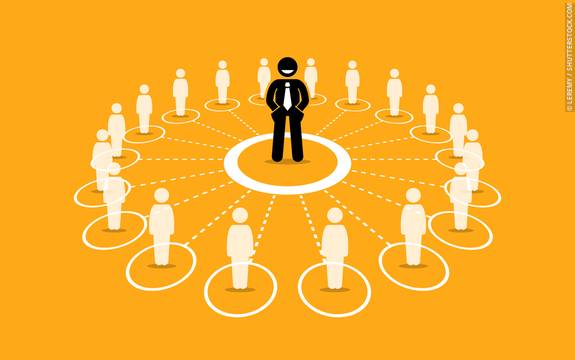Nike, Hasbro, Unilever, and Patagonia are all very different types of companies with varying missions and products. However, one thing they have in common as of late, is their recognized need for a more sustainable way of doing business.
Each in their own way has been adopting more sustainable practices across both product and marketing. To be clear, there are many other companies taking on similar tasks.
Generally speaking, sustainability looks to protect our natural environment, human and ecological health, while at the same time driving innovation without compromising our way of life. Seems easy enough right?
Far easier said than done that’s for sure. And not only for straight forward reasons of it being really tough to replace materials in products without sacrificing quality.
From a strategic perspective, is becoming more sustainable the right business move? Perhaps the leadership at Patagonia and Nike view that decision differently for their own reasons.
Do you really understand your consumers well enough to predict behavioral change based on this type of strategic initiative?
Given that a lot of consumers, and most Millennials, increasingly say they want brands that embrace purpose and sustainability it may be worth looking into.
Ray Anderson, Founder and CEO of Interface Carpet, a leading practitioner in sustainability mentions that “businesses able to adapt to the demands of our changing world, including the urgent demand for sustainability, will be more likely to thrive in the long term and enjoy strategic benefits.”
Apparently it’s more profitable to be sustainable!
If you ever thought about adopting more sustainable business practices or products to take part in this growing consumer trend or just because you want to be more sustainable, read on to learn more about how to encourage this kind of sustainable consumption.
A framework developed by marketing and behavioral science researchers Katherine White, Rishad Habib, and David Hardisty, is represented by the acronym SHIFT, and it proposes that consumers are more inclined to engage in pro-environmental behaviors when the message or context leverages the following psychological factors: Social influence, Habit formation, Individual self, Feelings and cognition, and Tangibility.
1) Social Influence

Consumers are influenced by the presence, behaviors, and expectations of others, which can occur through a variety of mechanisms. And social influence can be optimized by simply making sustainable behaviors more evident to others.
Social Norms
Social norms predict behaviors such as avoiding littering, composting and recycling, conserving energy opting for solar panels, and more.
Social Identities
Consumers are more likely to engage in sustainable actions if ingroup members are doing so. Viewing the self as a member of a pro environmental ingroup is a key determinant of pro-environmental choices and actions.
Social Desirability
Consumers tend to select sustainable options to make a positive impression on others, and they endorse high-involvement, sustainable options to convey social status to others.
2) Habit Formation
We are all creatures of habit. Habits are formed with repeated behavior,
often times in responses to contextual cues. More often than not you can find multiple trash cans in offices and businesses. We all know what to do when we see the three arrows recycle icon right?
Discontinuity to Change Bad Habits
Fines can encourage behavioral change in domains that can be monitored, such as the disposal of waste, whereas taxes and tariffs can be effective in domains that involve strong habits. Product pricing can be used in much the same way!
Implementation Intentions
One means of transitioning people from an old habit to a new one is to have them consider thoughts about what steps they need to take to engage in the action. Such intentions can positively influence recycling and sustainable food-purchasing habits. New behavior is encouraged through repetition.

Making it Easy
Many sustainable actions are viewed as effortful, time-consuming, or
difficult to carry out. Is your new product or sustainable service just as easy
or easier to consumer than before?
Prompts
Another means of encouraging sustainable habit formation is the use of
prompts: messages that are given before the behavior occurs to remind the
consumer what the desired sustainable behavior is.
Incentives
Rewards, discounts, gifts, and other extrinsic incentives can increase desired behaviors and positive habit formation. Monetary incentives such as rebates, tiered pricing, and cash can encourage people to adopt and maintain sustainable behaviors.
Feedback
Provide consumers with specific information about their own performance
on a task or behavior. Plus, people just like being reminded how awesome
they are for protecting our environment.
3) The Individual Self
Factors linked to the individual self can have a powerful influence on
consumption behaviors. This include positivity of the self-concept,
self-interest, self-consistency, self-efficacy, and individual differences.
Self-Concept
As a result of the desire to view the self positively, people often exhibit self-defensive reactions to learning that their own behaviors have negative environmental impacts and derogate others displaying more sustainable actions.
Self-Consistency
Self-consistency research shows that a consumer reaffirming a component
of the self-concept (e.g., being environmentally concerned) or engaging in a
sustainable behavior at one-time point often leads to consistent sustainable
behaviors in the future.
Self-Interest
Highlighting the self-benefits associated with a given sustainable product, service, or behavior can be an effective method to encourage sustainably.
Self-Efficacy
Self-efficacy involves beliefs that the individual can engage in the required action and that carrying out the behavior will have the intended impact. Consumers’ feelings of self-efficacy predict their sustainable attitudes as well as their tendencies to continue to enact sustainable behaviors over time.
Individual Differences
Individual differences in personal norms around sustainability predict
sustainable behaviors, including recycling, selecting sustainable food, and
being willing to pay more for sustainable options.
4) Feelings and Cognition

The concepts of feelings and cognition are together because, generally
speaking, consumers take one of two different routes to action: one that is
driven by affect or one that is more driven by cognition.
Negative Emotions
Subtle activation of negative emotions can be effective. Ever acted differently out of guilt? Thought so.
Positive Emotions
Consumers are more inclined to engage in pro-environmental actions when
they derive some hedonic pleasure or positive affect from the behavior.
Information, Learning, and Knowledge
One basic means of persuading consumers to engage in eco-friendly actions is to present information that conveys information regarding desired (and undesired) behaviors and their consequences. Intelligence, education, and knowledge are linked to greater responsiveness to environmental appeals and engagement in eco-friendly behaviors.
Eco-Labeling
Eco-labeling is one means of conveying information about the sustainable attributes of a product. Labels that are attention-grabbing, easily understandable, and consistent across categories can enable consumers to make better informed eco-friendly decisions.
Framing
Marketers can strategically choose message framing to encourage sustainable choices Because consumers care more about future losses than about future gains. For example, labels on energy-efficient appliances should compare energy costs rather than savings.
5) Tangibility
Most sustainable consumer behaviors involve putting aside more immediate
and proximal individual interests to prioritize behaviors with ill-defined
consequences that are focused on others and are only realized in the future
Matching Temporal Focus
Consumers are often present-focused. When consumers judge a future environmental payoff to be distant, it becomes less desirable in the present. One solution to this mismatch is to encourage the consumer to focus on future benefits of the sustainable action. Do it for your grandchildren!
Communicate Local and Proximal Impacts
Communications that relate the more immediate consequences of pro-environmental behaviors for a given city, region, or neighborhood can make
environmental actions and outcomes seem more tangible and relevant.
Concrete Communications
Making sustainability issues more relevant and concrete for the self. This can be done by communicating the immediate impacts of environmental problems such as climate change and outlining clear steps to make a difference.
Encourage the Desire for Intangibles
Promote dematerialization in which consumers decrease emphasis on the possession of tangible goods. This could include consumption of experiences, digital products or services.
